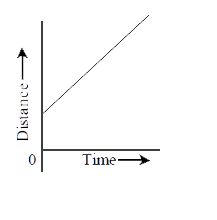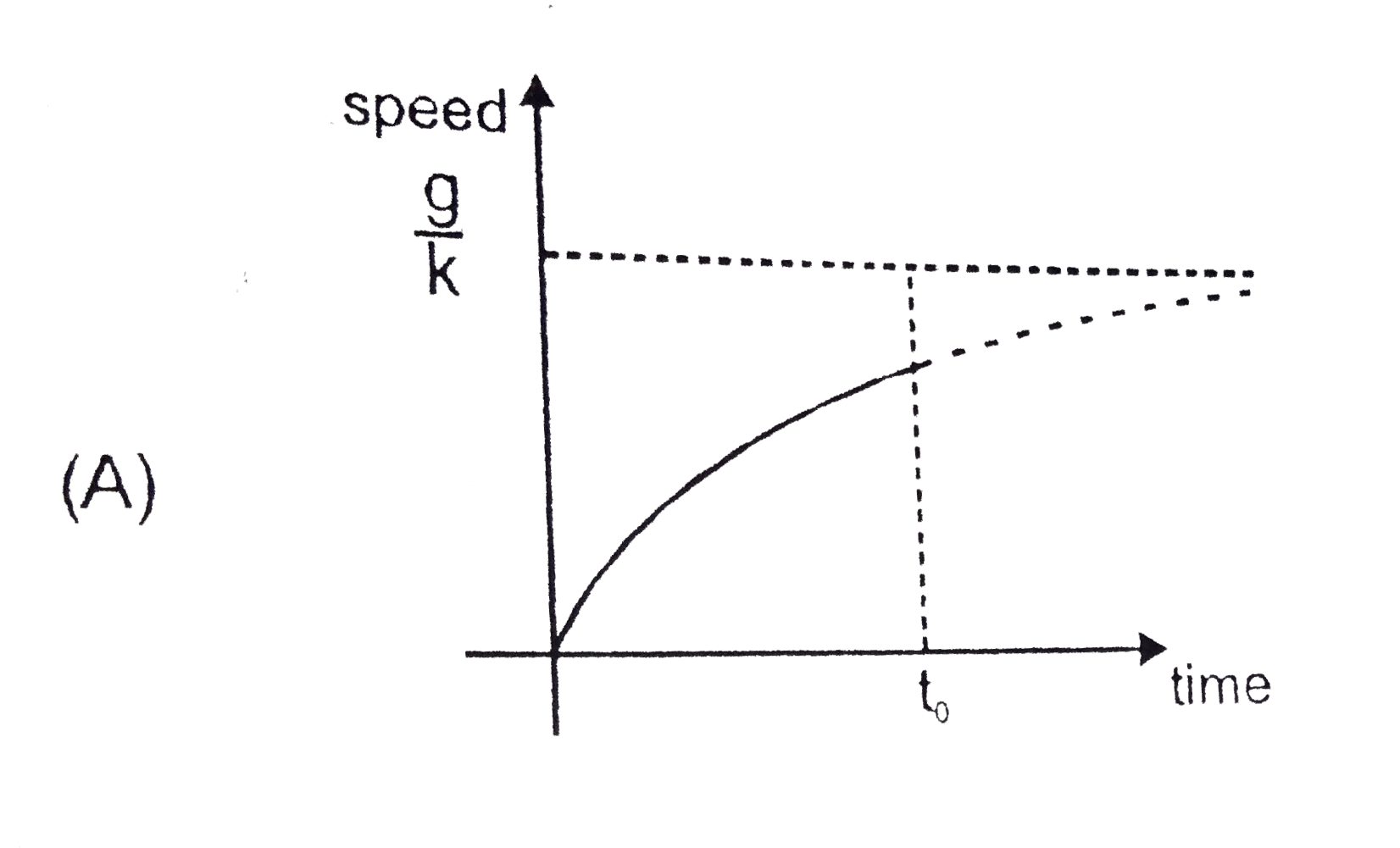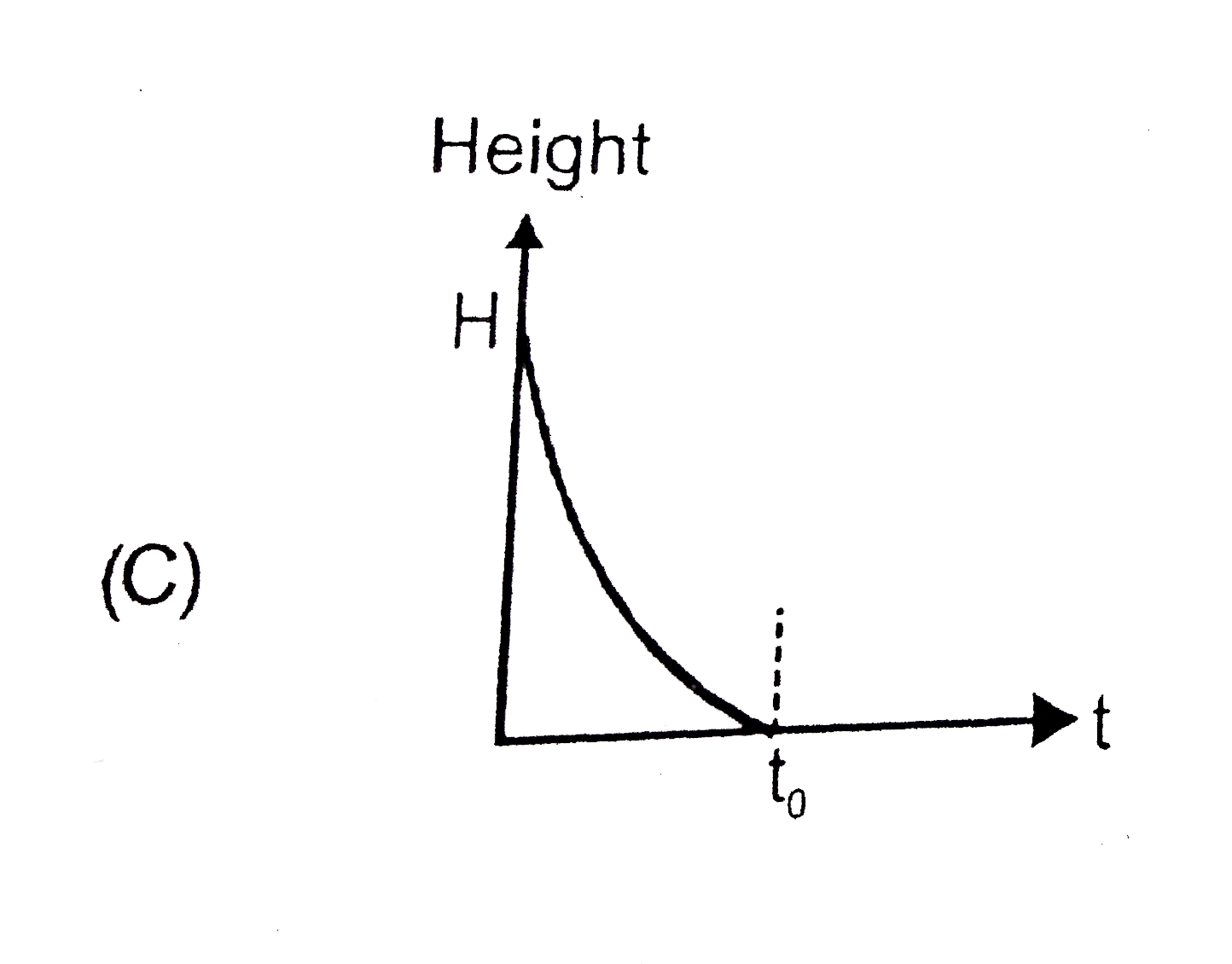Which of the following graph (s) is / are not possible




To determine which of the given distance versus time graphs is not possible, we need to analyze each option based on the fundamental principles of motion. Specifically, we need to remember that time is a continuous variable that cannot decrease; once time has progressed, it cannot revert to a previous value.
1. Understand the Nature of Distance vs. Time Graphs:
- Distance vs. time graphs depict how distance changes over time. For any given time, there should only be one corresponding distance value.
2. Analyze Option A:
- Option A presents a triangular graph.
- In this graph, as time increases, the distance also increases, and then it decreases back to the starting point.
- Since there is only one distance value for each time value, this graph is possible.
3. Analyze Option B:
- Option B shows a straight line graph.
- This indicates a constant speed, where distance increases linearly with time.
- Again, for each time value, there is only one corresponding distance value, making this graph possible.
4. Analyze Option C:
- Option C depicts a graph where the distance decreases after reaching a maximum point, suggesting that the object returns to a previous distance at a later time.
- This implies that at the same time value, there are two different distance values (one when moving forward and one when returning), which violates the principle that each time must correspond to only one distance.
- Therefore, this graph is not possible.
5. Analyze Option D:
- Option D shows another straight line graph.
- Similar to Option B, this indicates a constant speed with a unique distance for each time value.
- Thus, this graph is also possible.
6. Conclusion:
- Based on the analysis, the only graph that is not possible is Option C, as it violates the rule that time cannot regress.
Final Answer:
The graph that is not possible is Option C.
- Distance vs. time graphs depict how distance changes over time. For any given time, there should only be one corresponding distance value.
- Option A presents a triangular graph.
- In this graph, as time increases, the distance also increases, and then it decreases back to the starting point.
- Since there is only one distance value for each time value, this graph is possible.
- Option B shows a straight line graph.
- This indicates a constant speed, where distance increases linearly with time.
- Again, for each time value, there is only one corresponding distance value, making this graph possible.
- Option C depicts a graph where the distance decreases after reaching a maximum point, suggesting that the object returns to a previous distance at a later time.
- This implies that at the same time value, there are two different distance values (one when moving forward and one when returning), which violates the principle that each time must correspond to only one distance.
- Therefore, this graph is not possible.
- Option D shows another straight line graph.
- Similar to Option B, this indicates a constant speed with a unique distance for each time value.
- Thus, this graph is also possible.
- Based on the analysis, the only graph that is not possible is Option C, as it violates the rule that time cannot regress.
The graph that is not possible is Option C.
Topper's Solved these Questions
- ONE DIMENSION MOTIONBOOK - MOTIONCHAPTER - ONE DIMENSION MOTIONEXERCISE - EXERCSE -1 (Section - A : Distance, Displacement, Velocity and Acceleration, Equation of Motion )
26 Videos
- ONE DIMENSION MOTIONBOOK - MOTIONCHAPTER - ONE DIMENSION MOTIONEXERCISE - EXERCSE -1 (Section - B : Motion under Gravity)
11 Videos
- NLM & FRICTIONBOOK - MOTIONCHAPTER - NLM & FRICTIONEXERCISE - EXERCISE-4 ( LEVEL-II)
15 Videos
- OPTICSBOOK - MOTIONCHAPTER - OPTICSEXERCISE - Exercise
45 Videos
Similar Questions
Knowledge Check
A particle is dropped from a finite height H above the ground level under gravity . Due to air resistance acceleration of particle becomes a=g−kv in the direction of velocity. Where k= positive constant &v= speed of particle. Then which of the following graph(s) is / are possible (t0= time when particle touches the ground ):
A B
B C
C D
D
Out of the following graph(s), which is / are not possible ?
A B
B C
C D
D
Which of the following graphs is/are correct.
A B
B C
C D
D

 , Which of the following graphs is suitable
, Which of the following graphs is suitable